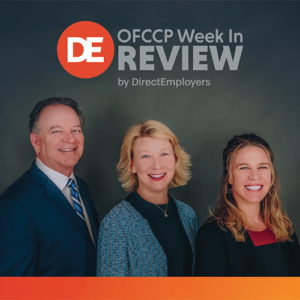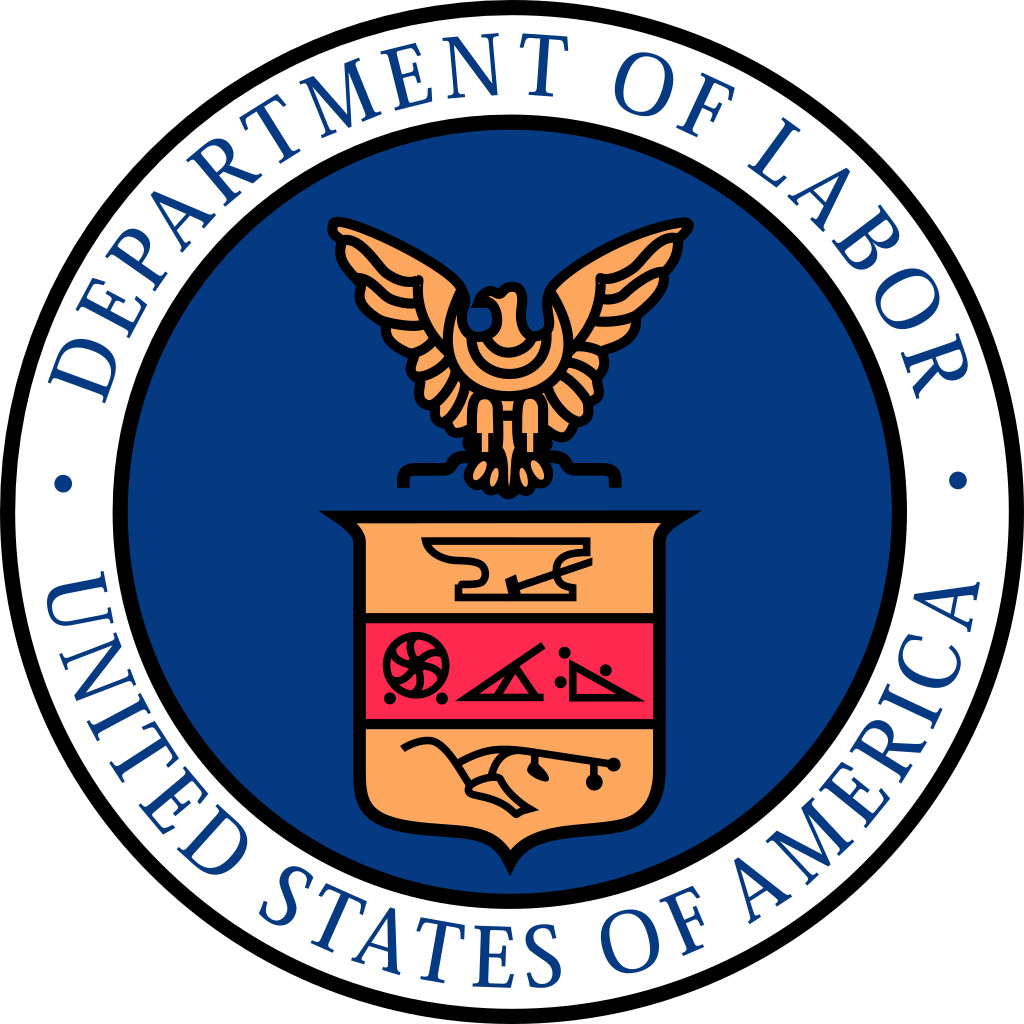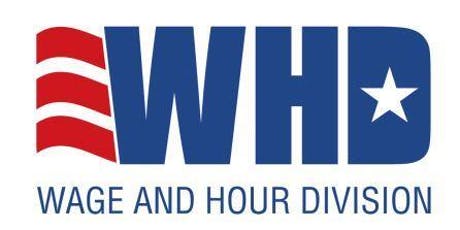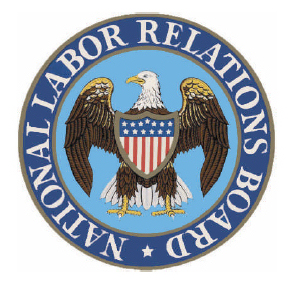
- OSHA Created Webpage for COVID-19 Guidance to Help Construction Workers
- New Version of “Employer Guide to Hiring Veterans” Released
- OFCCP Announced New Landing Page for Native American Inclusion Efforts
- Comment Now on the ‘Report of Construction Contractor’s Wage Rates’
- ODEP Supports Employers to Recognize Mental Health Awareness Month
- ETA Published A Blog Setting Out Six Steps to Become an SRE
- OSHA Issued a Social Distancing Alert
- Federal Judge Strikes Down NLRB “Anti-Quickie” Union Election Rules
- Senate Hearing Scheduled for OFCCP Director Leen to be OPM Inspector General
- Upcoming Event
Tuesday, May 26, 2020: OSHA Created Webpage for COVID-19 Guidance to Help Construction Workers

According to the release:
“Employers of workers engaged in construction (such as carpentry, ironworking, plumbing, electrical, heating/air conditioning/ventilation, utility construction work, and earth-moving activities should remain alert to changing outbreak conditions, including as they relate to community spread of the virus and testing availability. In response to changing conditions, employers should implement coronavirus infection prevention measures accordingly.”
Wednesday, May 27, 2020: New Version of “Employer Guide to Hiring Veterans” Released

The guide also includes ways to recruit veterans before they leave active duty. Programs such as the U.S. Department of Defense’s (DOD) SkillBridge enable employers to sponsor internship and pre-apprenticeship opportunities for transitioning service members up to 180 days before they are discharged. Additionally, the guide covers options for training veterans on the specific skills they need for your workplace, including information to help you start a registered apprenticeship.
“During their years of military service, veterans gain valuable hard and soft skills in a culture that encourages initiative, believes in accountability, and develops some of the finest leaders in the world,” said Assistant Secretary of Veterans’ Employment and Training John Lowry. “These formative professional experiences enable multitudes of veterans to transition seamlessly into the civilian world and bring tremendous value to the businesses and organizations they choose to serve.”
Wednesday, May 27, 2020: OFCCP Announced New Landing Page for Native American Inclusion Efforts

In response to the Native American Outreach Town Hall last September, the Agency identified three action plan items to increase program awareness, provide compliance assistance, and identify contractor resources. These items are now available on the dedicated webpage.
- The Indian and Native American Employment Rights Program has updated its webpage to allow contractors to quickly find information and resources to assist them with their outreach efforts to Native Americans.
- A list of “Best Practices” to create inclusive workplaces for Native Americans. The list includes strategies and stakeholder resources to make diversity and inclusion programs successful.
- New “Indian Preference Frequently Asked Questions (FAQs)” that respond to stakeholder questions received during the Town Hall meeting. OFCCP has also pledged to regularly update the FAQs to add new questions received from stakeholders along with OFCCP’s answers.
Thursday, May 28, 2020: Comment Now on the ‘Report of Construction Contractor’s Wage Rates’

Comment on:
- Whether the collection of information is necessary for the proper performance of the functions of the Department, including whether the information will have practical utility;
- if the information will be processed and used in a timely manner;
- the accuracy of the Agency’s estimates of the burden and cost of the collection of information, including the validity of the methodology and assumptions used;
- ways to enhance the quality, utility, and clarity of the information collection; and
- ways to minimize the burden of the collection of information on those who are to respond, including the use of automated collection techniques or other forms of information technology.
Why?
The Davis-Bacon and Related Acts apply to contractors and subcontractors performing on federally funded or assisted contracts valued at over $2,000 for the construction, alteration, or repair (including painting and decorating) of public buildings or public works. Contractors and subcontractors must pay their laborers and mechanics employed under the contract no less than the locally “prevailing wages and fringe benefits” for corresponding work on similar projects in the area. The Davis-Bacon Act directs the Department of Labor to determine such locally prevailing wage rates. For additional information and guidance, see the Wage & Hour Division webpage dedicated to “Davis-Bacon and Related Acts.”
Thursday, May 28, 2020: ODEP Supports Employers to Recognize Mental Health Awareness Month

The Job Accommodation Network (JAN) published a blog post titled, “Coronavirus (COVID-19), Stress, and Mental Health Conditions,” which explores how the unknowns of the pandemic and stress induced by working and caregiving at home can be particularly difficult for those with mental health conditions. JAN consultant Sarah Small explains that it may be appropriate for employers to offer flexibility and provide temporary accommodations to help all employees experiencing increased stress. JAN offers specific guidance on COVID-19 and accommodations for people with mental health impairments.
Another resource employers can use is the Employer Assistance and Resource Network on Disability Inclusion’s (EARN) Mental Health Toolkit. This online resource outlines steps businesses can take to foster a mental health-friendly workplace framed around the “4 A’s:”
- Building Awareness and a supportive culture;
- Providing Accommodations to employees;
- Offering employee Assistance; and
- Ensuring Access to mental health treatment.
For additional news and resources, sign up for ODEP’s email updates.
Thursday, May 28, 2020: ETA Published A Blog Setting Out Six Steps to Become an SRE

“How to Become a Standards Recognition Entity for Industry-Recognized Apprenticeship Programs” outlines the process in the following six steps:
- Become familiar with the IRAP model by reviewing the Final Rule, the IRAP fact sheet, and frequently asked questions.
- Learn more about the criteria, roles, and responsibilities of an SRE by reviewing the SRE fact sheet and the recording of the IRAP webinar for prospective SREs.
- Identify the industries, occupations, and geographic areas for which you envision serving as an SRE. Consider convening employers and other organizations to assess their most immediate workforce development needs as well as the services required in each of these areas to scale up IRAPs.
- Develop the plans of action, policies, structures, and key partnerships that will form the basis for a successful SRE application.
- Review the pre-application checklist to ensure you have all of the required documentation.
- Submit an online application to the U.S. Department of Labor via the SRE application portal.
The blog also identifies which entities may apply to become an SRE.
Staff from the Department’s Office of Apprenticeship are located across the country and are available to help with any questions. There is also a seven-page Technical Resource Guide to help you create an account, upload documents, and submit an application. You may send additional technical questions about the application portal online or via email to irap@dol.gov.
Thursday, May 28, 2020: OSHA Issued a Social Distancing Alert

Are you following the seven recommendations? Check the alert to find out. OSHA will be issuing a series of alerts aimed to keep workers safe through the pandemic and beyond.
In addition, Principal Deputy Assistant Secretary for Occupational Safety and Health Loren Sweatt testified before the House of Representatives Education and Labor Committee’s Workforce Protections Subcommittee about the Agency’s role during the COVOD-19 crisis. The announcement highlights (with links) many of the actions and guidance the Agency has released over the past few months, including respirator guidance, protecting workers in high-risk industries, enforcing safety in the workplace, and offering clear direction for employers.
Reminder
Employers must report to OSHA within 24 hours of the time an employee is hospitalized following a workplace injury or illness, including because the employee contracted COVID-19 at work: 29 CFR 1904.39(a)(2). Indeed, OSHA just last week issued its first citation (including an over $6,000 fine) to an employer that failed to report to OSHA the hospitalization of an employee who contracted COVID-19 while working.
Friday, May 29, 2020: Federal Judge Strikes Down NLRB “Anti-Quickie” Union Election Rules

NOTE: Once a union seeks a union election, an election campaign begins under strict rules as the union and the company then vie for the votes of the employees to be in the union upon a secret ballot majority vote. Companies usually prefer a longer period of time to campaign since the union has typically been planning its campaign and has been secretly meeting with disgruntled employees for some time before the union alerts the company to its plan to call for a vote to unionize the company’s employees.
After ruling that she had jurisdiction to hear the case, Judge Brown further held:
“The Court further finds that the challenged portions of the regulation at-issue are not procedural rules that are exempted from the notice-and-comment rulemaking of the APA (Administrative Procedure Act)… .”
Judge Brown also noted that her Order was not appealable until she published her Memorandum Opinion, which she promised to publish “soon.”
NOTE: Apart from the NLRB election Rule at-issue in this case, Judge Brown’s case decision is a useful reminder generally as to all federal agencies, including OFCCP, about how federal Rulemaking is intended to operate. Any agency which intends a “substantive” change in a Rule, or in even a longstanding practice of the agency, and which change impacts adversely the regulated community, must be the subject of Notice of a proposed change to the Rule or the practice. In addition, the agency must invite “Comments” about the proposed change of policy or procedure from the public. Finally, the agency must also then receive and consider the public “Comments” before publishing a “Final” binding Rule. Public comments are thus critical because they serve as the trial record for any reviewing Court guiding its decision as to whether the change of Rule or practice is legally supportable. (You saw recently, for example, another federal District Court Judge in Washington D.C. use public Comments when hearing the challenge to the Trump EEOC’s Notice to the public that it was NOT going to collect EEO-1 Component 2 “hours worked” and “pay data.” You will recall that the Obama Administration EEOC had ordered these data collected and justified the collection based on public Comments and given its consideration of studies of pay practices in America. Judge Tanya Chutkan, hearing the Component 2 challenge, then struck down the decision of the Trump EEOC in light of the public Comments, which the Court found justified the Obama Administration’s decision to collect the data).
In the NLRB case, Notice to the public inviting Comment was entirely lacking because the NLRB tried to rely on a narrow exemption to the APA which allows federal agencies to accomplish “procedural” changes without Notice and Comment. However, the Courts generally find any material impact on the regulated community to be “substantive” and thus subject to the APA’s Notice and Comment requirements. The Notice and Comment requirements then allow the sponsoring federal agency the opportunity to build a trial record to justify to any reviewing Court the exercise of the agency’s discretion to do what it had proposed in the Notice to the public.
Monday, June 1, 2020: Senate Hearing Scheduled for OFCCP Director Leen to be OPM Inspector General
The rumors are true. Craig Leen has been making the rounds in the Senate, shaking hands with Republican Senators on the Senate Homeland Security & Government Affairs Committee in preparation for his big event. On Tuesday, June 2, 2020, at 2:30 p.m. EST via video conference, the Senate will hold a nomination hearing to consider Director Leen to become the next Inspector General (IG) of the Office of Personnel Management (OPM).
OPM is, in effect, the largest civilian Human Resources Department in the world and manages the employment of the federal government’s over 2 million civilian employees. Inspector Generals are political appointees and “inferior officers” (to use the language of Article II, Section 2 of the U.S. Constitution) of the Executive Branch of the federal government subject to the “advice and consent” of the U.S. Senate.
Inspector Generals exist in most major federal departments. Often called “watchdogs” or “junkyard dogs,” IGs are typically not well-liked within the agencies they serve since they are charged to root out “fraud, waste, and abuse.” This often puts them at odds with agency managers and employees. Inspector Generals have recently become newsworthy and threaten to become a Presidential political campaign issue as Democrats have very recently criticized President Trump for firing Inspector Generals and leaving 14 positions unfilled, including 11 for more than a year. Movement on the Leen appointment may signal Republican strategy to blunt the criticism and force the hand of Democrats in the Senate to provide Floor Vote time to allow more appointments of IG positions. The rumor is that Republicans will now create a “bundle” of IG nominations to go to the Senate Floor together to obtain their confirmations ahead of many other nominees waiting for Floor Vote time to complete their appointments. NOTE: Two EEOC nominations are in this pending “hold” status. See DE WIR March 2, 2020.
What’s Next?
The Homeland Security and Government Affairs Committee will complete the hearing and vote on Director Leen’s nomination. Then it’s up to Senate Majority Leader Mitch McConnell (R-Ky) to schedule a precious Floor Vote in the Senate. Since the Senate is in session all of June (before heading to a recess during the first two weeks of July), it very much appears Senator McConnell is shooting for a June Senate Floor vote. Director Leen could be “General Leen” and on the job at OPM after the Fourth of July.
Fun Fact: The view of the Fireworks on the Fourth of July in downtown Washington D.C. is MUCH better from the roof of the OPM building than from the roof of the USDOL, although both are superb venues!
As soon as the Senate approves Mr. Leen’s appointment (if he first gets the Committee approval, as he should, given the commanding control Republicans enjoy) and then wins the Senate Floor vote (as he should), Secretary of Labor Eugene Scalia will then likely issue a Press Release announcing Leen’s departure from USDOL and OFCCP, and the appointment of his successor at OFCCP. Robert (“Bob”) J. Gaglione, the political appointee Deputy Director at OFCCP supporting Director Leen, is currently the heavy favorite to become the Acting Director of OFCCP upon Director Leen’s departure.
Upcoming Event
Tuesday, June 2, 2020: Vocational Rehabilitation 100th Anniversary

The Event
Tuesday, June 2, 2020
2:30 p.m. – 3:30 p.m. EST
“VR100 Anniversary: Celebrating a Century of Success“
The Spotlight
Success stories of how the VR program has changed the lives of students and adults with disabilities.
DE Members
To enhance your outreach by directly communicating with local vocational rehabilitation centers, ask our Member Engagement Team about VocRehab+. This is yet another service in support of our initiative to make DirectEmployers your “One-Stop-Shop” for OFCCP and related information and tools.
THIS COLUMN IS MEANT TO ASSIST IN A GENERAL UNDERSTANDING OF THE CURRENT LAW AND PRACTICE RELATING TO OFCCP. IT IS NOT TO BE REGARDED AS LEGAL ADVICE. COMPANIES OR INDIVIDUALS WITH PARTICULAR QUESTIONS SHOULD SEEK ADVICE OF COUNSEL.
SUBSCRIBE.
Compliance Alerts
Compliance Tips
Week In Review (WIR)
Subscribe to receive alerts, news and updates on all things related to OFCCP compliance as it applies to federal contractors.
OFCCP Compliance Text Alerts
Get OFCCP compliance alerts on your cell phone. Text the word compliance to 55678 and confirm your subscription. Provider message and data rates may apply.
